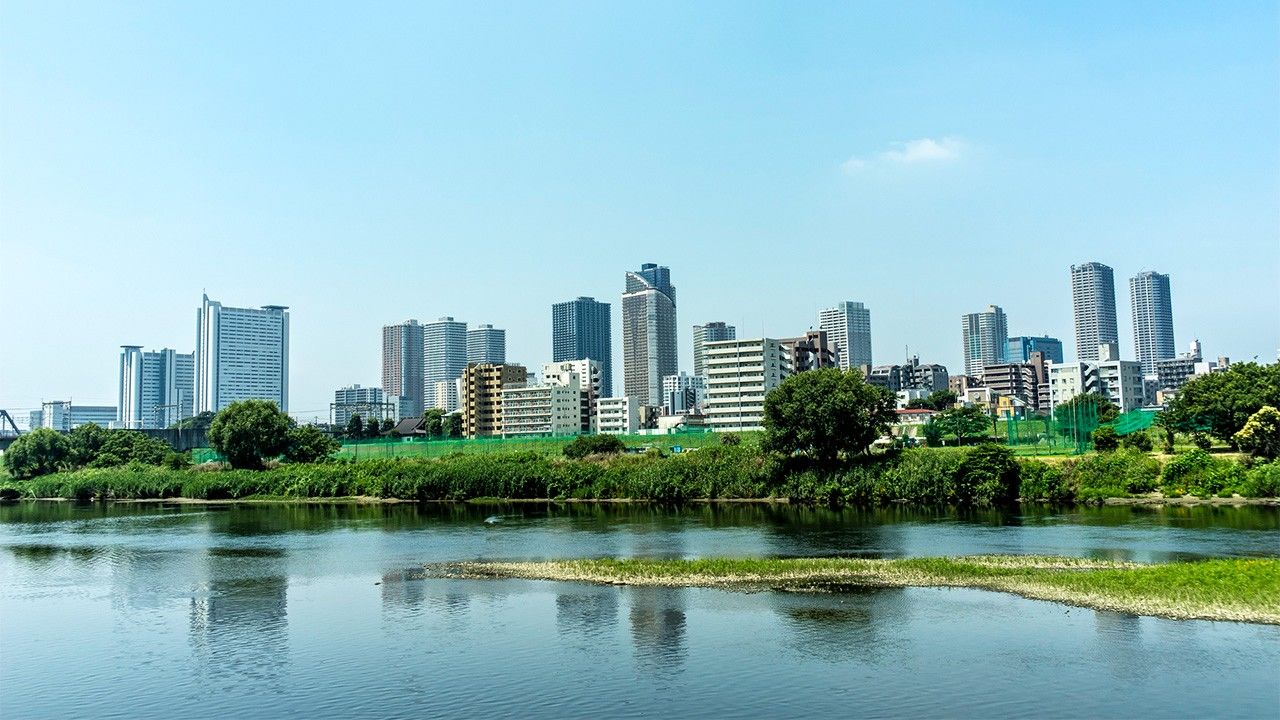
Kawasaki Surpasses Kobe to Become Japan’s Sixth Largest City
Society- English
- 日本語
- 简体字
- 繁體字
- Français
- Español
- العربية
- Русский
Kawasaki was once synonymous with the ills of heavy industry, but the city now projects a convenient image and attracts a steady flow of new residents. In May 2019 Kawasaki surpassed Kobe to become Japan’s sixth largest government-designated city. Note that Tokyo is not on this list, as it is treated as a prefecture.
Japan’s Largest Government-Designated Cities
| Population | Year -Designated | |
|---|---|---|
| Yokohama | 3,747,967 | 1956 |
| Osaka | 2,728,981 | 1956 |
| Nagoya | 2,317,646 | 1956 |
| Sapporo | 1,968,657 | 1972 |
| Fukuoka | 1,587,500 | 1972 |
| Kawasaki | 1,526,630 | 1972 |
| Kobe | 1,524,749 | 1956 |
| Kyoto | 1,467,895 | 1956 |
| Saitama | 1,308,696 | 2003 |
| Hiroshima | 1,197,929 | 1980 |
| Sendai | 1,088,786 | 1989 |
Based on figures released by each city in May 2019.
Government-designated cities are large municipalities that have authority on par with that of prefectures. Cities that either already have a population of one million or have over 800,000 residents with the likelihood of surpassing one million in the future can receive this designation. The requirement was temporarily reduced to 700,000 to encourage cities and towns to consolidate, and since 2005 the number of government-designated cities has gradually increased.
Kawasaki sets on Tokyo Bay between Yokohama to the south and Tokyo to the north. The city is home to the Keihin industrial zone, a concentration of factories that traces its roots back to the start of the Meiji era (1868–1912). Kawasaki was devastated by air raids during World War II, but successfully rebuilt its industries. However, in recent decades its convenient transportation access has transformed the city into a bedroom town for commuters working in central Tokyo. Kawasaki’s population has steadily increased since becoming a government-designated city in 1972.
Since 2008, the construction of numerous high-rise condominiums as part of redevelopment of the area around Musashikosugi Station, a hub for JR and Tōkyū train lines, have contributed to the upward trend in Kawasaki’s population. By contrast, populations of other government-designated cities have leveled off in recent years.
Comparing the 1990 national survey and population estimates for 2018 shows that Kawasaki’s population rose by 29.22% over the last three decades, marking the highest increase among Japan’s 20 government-designated cities.
(Translated from Japanese. Banner photo: The Tama River against the backdrop of high-rise condominiums in the Musashikosugi district of Kawasaki. © Pixta.)


